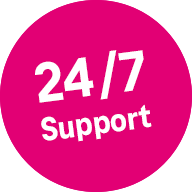Roles regulate the rights on the Open Telekom Cloud. The commercial and technical administrators have the most extensive rights. These roles are mandatory.
Commercial administrator
The commercial administrator is the contract holder and can initiate contractual changes in his role. Furthermore, the commercial administrator has access to the Financial Dashboard. This role does not have access to the Open Telekom Cloud Console as standard.
Technical Administrator
The technical administrator is the enterprise administrator and has the right to authorise further users to a tenant via Identity and Access Management (IAM) and to define granular rights management. The technical administrator does not have access to financial data, such as the financial dashboard or the billing history.



